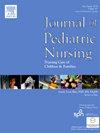青少年健康实践自我效能感量表的适应与验证
IF 2.3
4区 医学
Q2 NURSING
Journal of Pediatric Nursing-Nursing Care of Children & Families
Pub Date : 2025-07-28
DOI:10.1016/j.pedn.2025.07.022
引用次数: 0
摘要
青少年在健康发展方面面临重大挑战。设计有效的青少年健康教育方案的一个关键步骤是能够评估和确定特定健康领域的个人需求。本横断面研究评估了青少年健康实践自我效能量表(SEHPS)的适应性自我报告测量的心理测量特性。方法SEHPS的条目改编自一种为成人设计的测量方法,即健康实践能力自评量表。针对青少年进行了项目调整,并创建了额外的项目来衡量成人量表中未包括的另一个健康维度。来自德克萨斯州西部三个学区的438名青少年完成了这款乐器。采用倾斜旋转主轴因子分析法进行探索性因子分析(EFA),分析SEHPS的因子结构。采用验证性因子分析(Confirmatory Factor Analysis, CFA)对EFA所识别的因子结构进行验证。信度、收敛效度和判别效度分析也被执行。结果该分析支持一个测量心理健康、营养、锻炼、健康习惯和身体安全的五因素解决方案。综合起来,这五个因素解释了62.7%的差异。结果表明,模型拟合良好,信度满意,具有收敛效度和判别效度。结论该量表是评估青少年实施健康行为自我效能感的有效、可靠的工具。SEHPS是护士和其他医疗保健专业人员寻求设计、实施和评估青少年健康干预措施的宝贵工具。本文章由计算机程序翻译,如有差异,请以英文原文为准。
Adaptation and validation of a scale to measure self-efficacy for health practices in adolescents
Purpose
Adolescents face significant challenges to healthy development. A key step in designing effective health education programs for adolescents is the ability to assess and identify individual needs in a particular area of health. This cross-sectional study evaluated the psychometric properties of an adapted self-report measure assessing self-efficacy for health practices among adolescents, the Self-Efficacy for Health Practices Scale (SEHPS).
Methods
Items for the SEHPS were adapted from a measure designed for adults, the Self-Rated Abilities for Health Practices Scale. Items were adapted for use with adolescents, and additional items were created to measure another dimension of health not included in the adult scale. 438 adolescents from three school districts in west Texas completed the instrument. Exploratory factor analysis (EFA) was performed using principal axis factor analysis with oblique rotation to analyze the factor structure of the SEHPS. Confirmatory Factor Analysis (CFA) was employed to confirm the factor structure identified by the EFA. Reliability, convergent, and discriminant validity analyses were also performed.
Results
The analysis supported a five-factor solution measuring psychological well-being, nutrition, exercise, health practices, and physical safety. Combined, the five factors explained 62.7 % of the variance. Results from the CFA indicated a good model fit and satisfactory reliability, as well as convergent and discriminant validity.
Conclusions
Results suggest that the scale is a valid and reliable instrument to assess adolescents' self-efficacy beliefs to implement health practices. The SEHPS is a valuable tool for nurses and other healthcare professionals seeking to design, implement, and evaluate health-focused interventions for adolescents.
求助全文
通过发布文献求助,成功后即可免费获取论文全文。
去求助
来源期刊

Journal of Pediatric Nursing-Nursing Care of Children & Families
NURSING-PEDIATRICS
CiteScore
3.70
自引率
8.30%
发文量
291
审稿时长
65 days
期刊介绍:
Official Journal of the Society of Pediatric Nurses and the Pediatric Endocrinology Nursing Society (PENS)
The Journal of Pediatric Nursing: Nursing Care of Children and Families (JPN) is interested in publishing evidence-based practice, quality improvement, theory, and research papers on a variety of topics from US and international authors. JPN is the official journal of the Society of Pediatric Nurses and the Pediatric Endocrinology Nursing Society. Cecily L. Betz, PhD, RN, FAAN is the Founder and Editor in Chief.
Journal content covers the life span from birth to adolescence. Submissions should be pertinent to the nursing care needs of healthy and ill infants, children, and adolescents, addressing their biopsychosocial needs. JPN also features the following regular columns for which authors may submit brief papers: Hot Topics and Technology.
 求助内容:
求助内容: 应助结果提醒方式:
应助结果提醒方式:


